Story: First in a series of non-fiction comics about historical queens, read about the life, tribulations and achievements of Hatshepsut, one of Egypt’s greatest female pharaohs and one of first known great woman of history.
This has been properly researched with reliable sources, books and articles, and has footnotes, a bibliography, and art references. (38 pages, Ages 10+)
Currently, you can buy this at my shop and on Amazon. Schools can order it via Scholastic Australia (ASO).

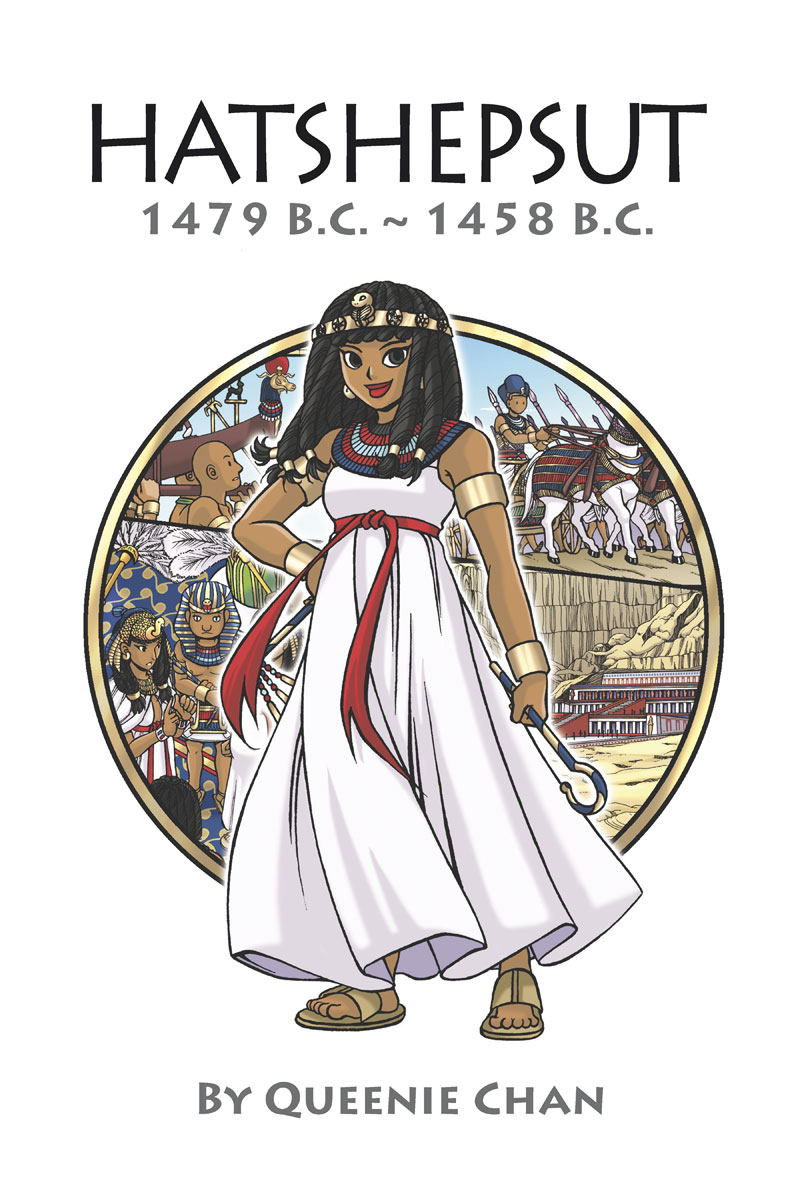
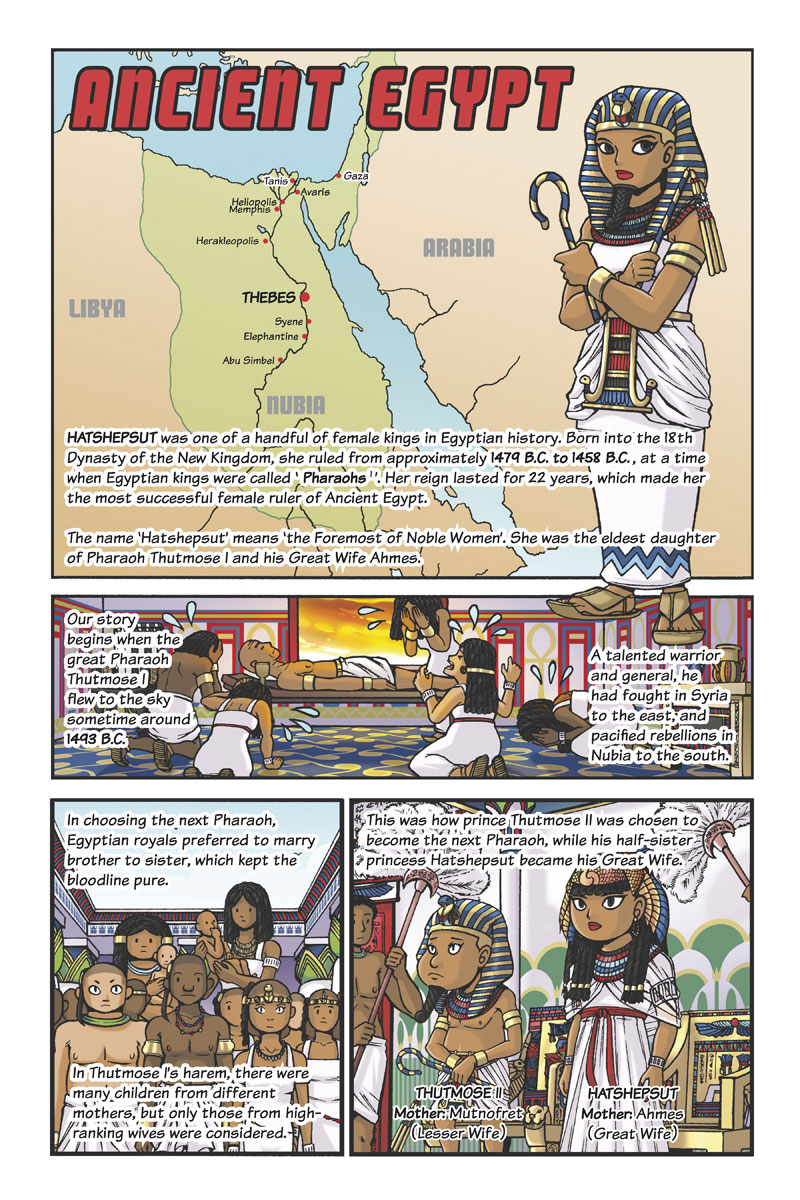
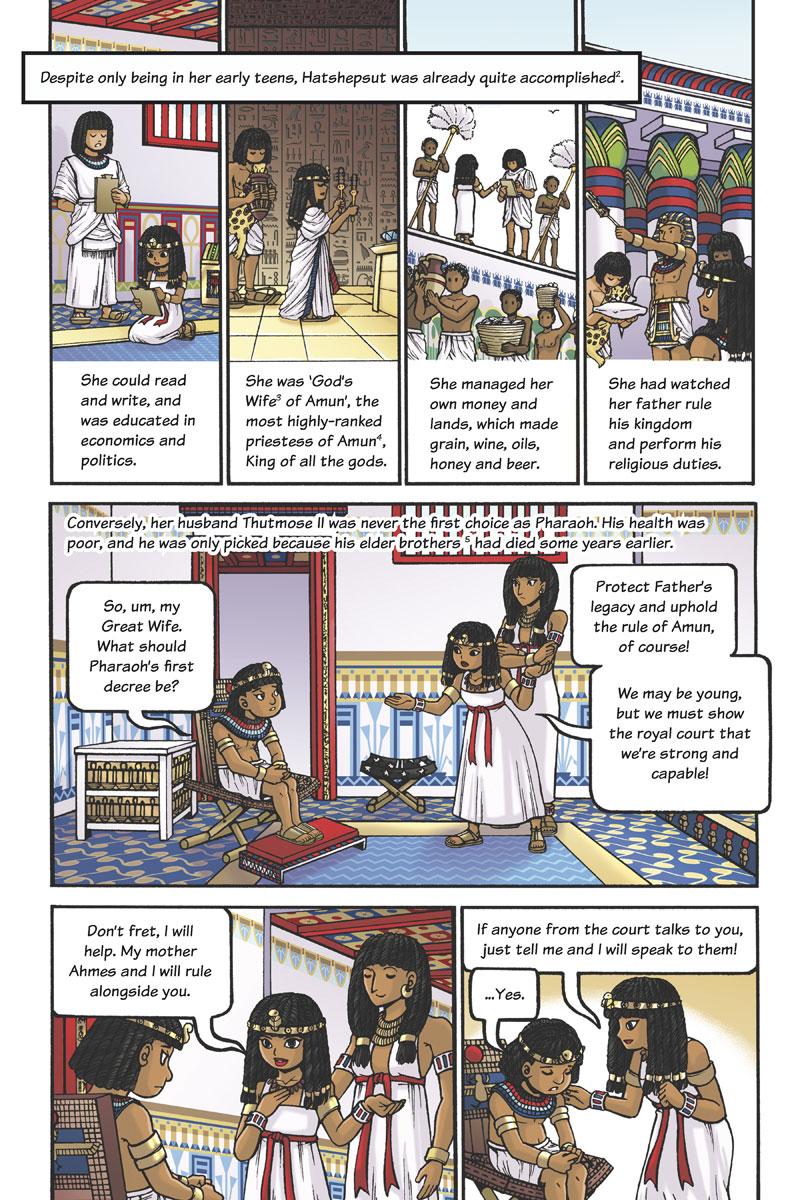
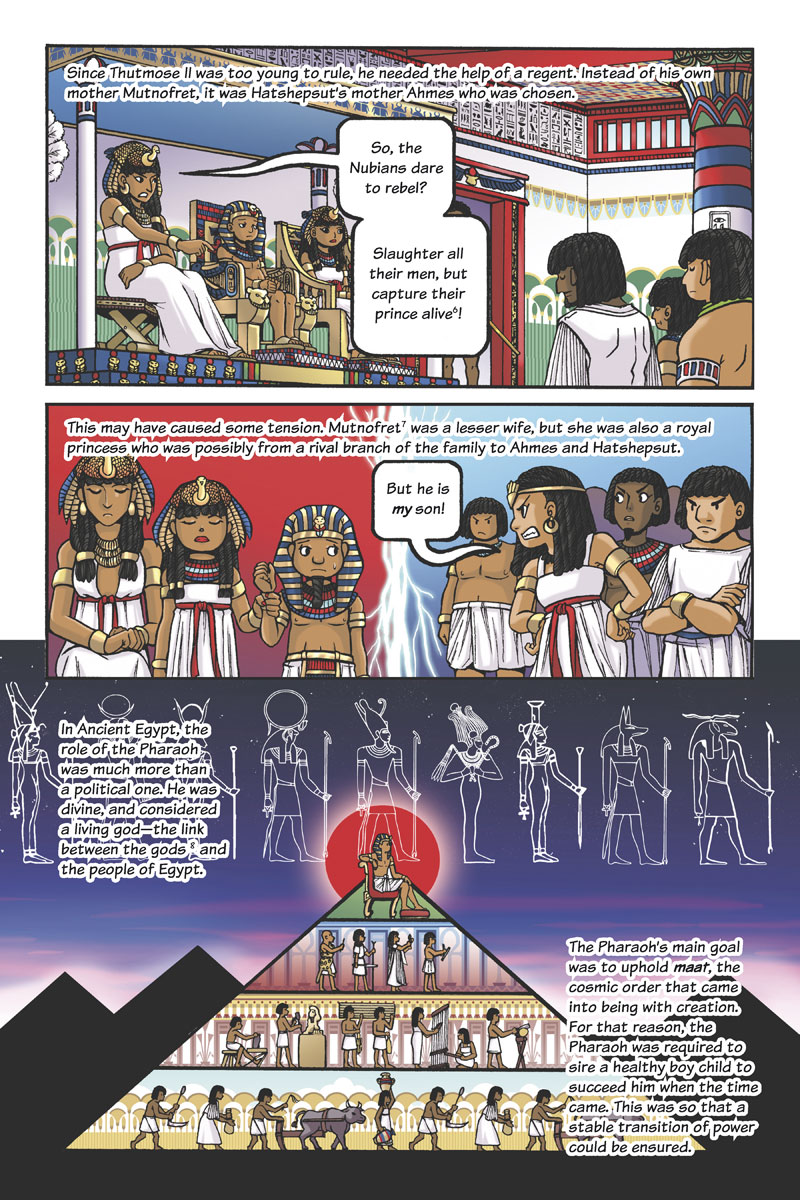
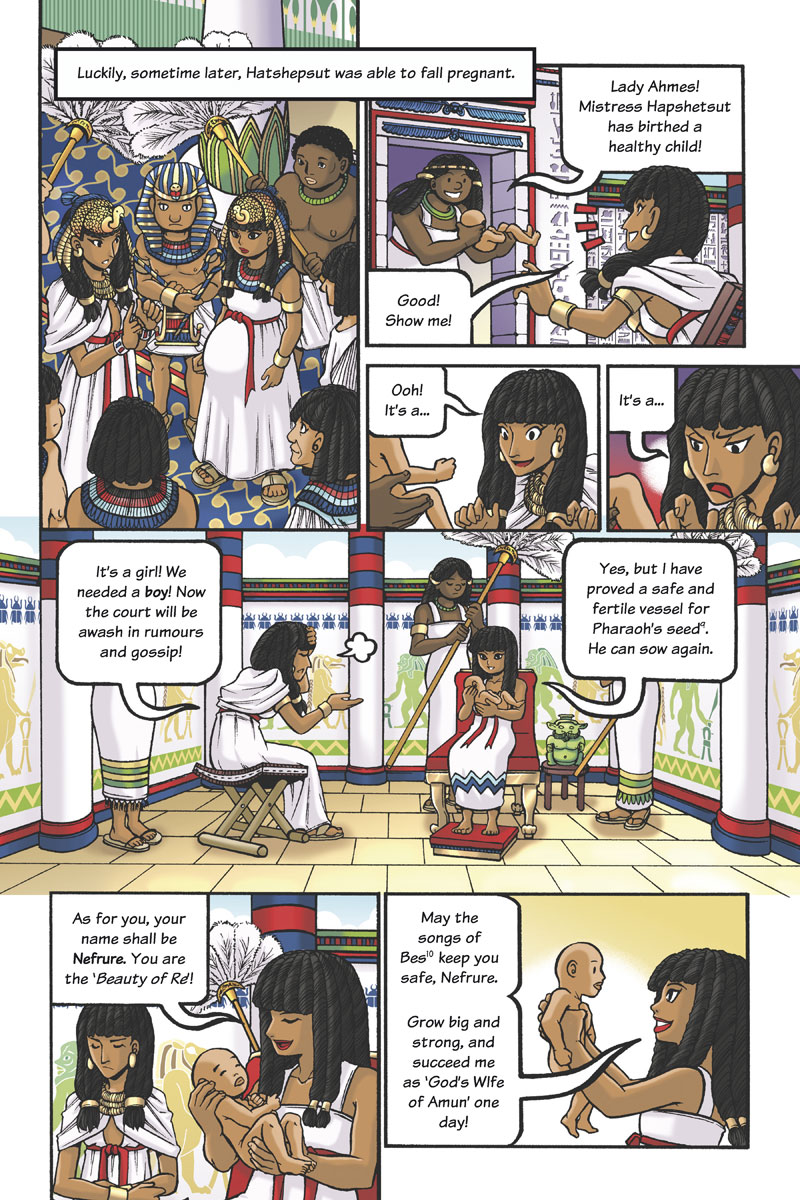

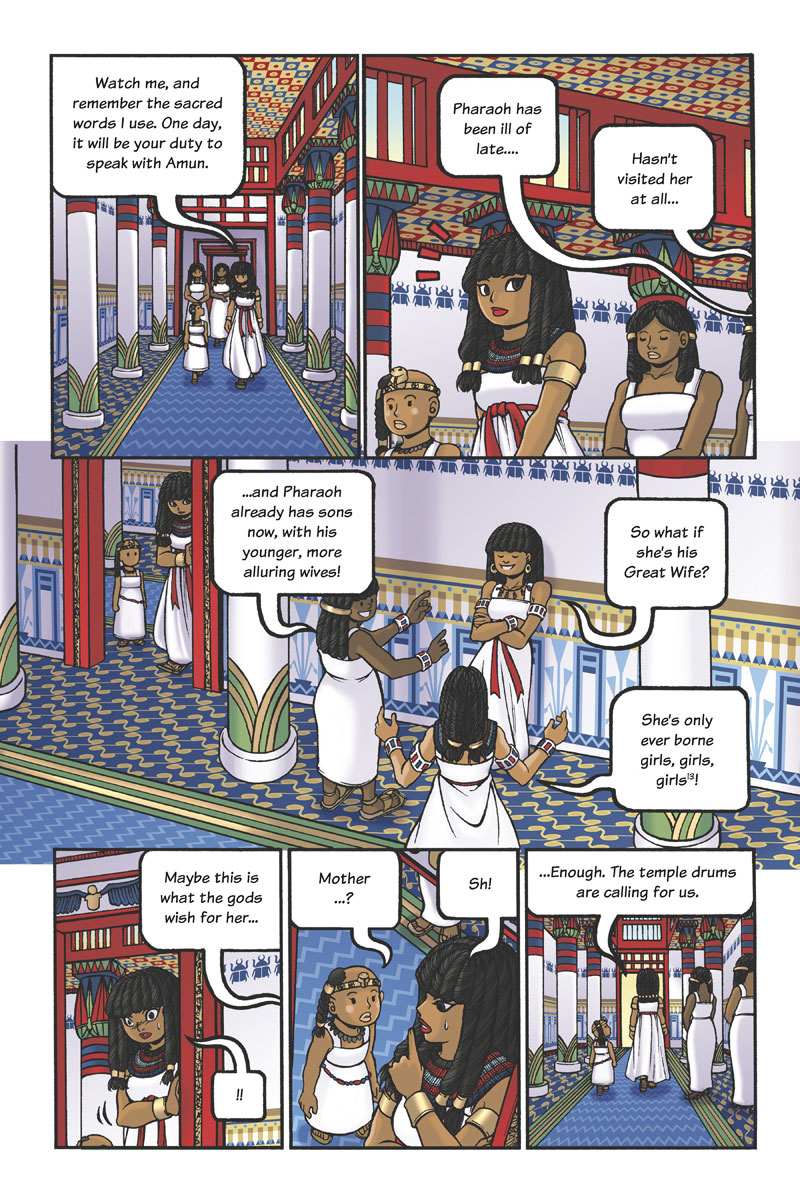
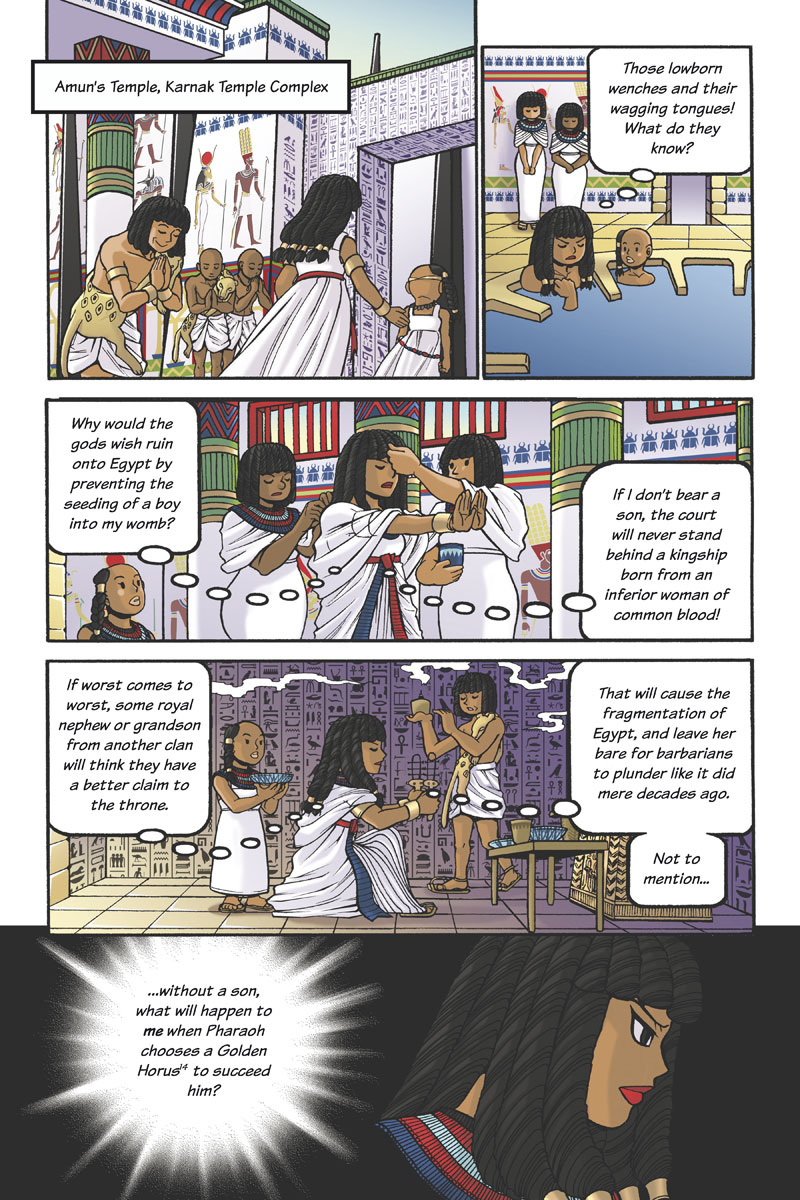

The rest of the story is available in print.
You can buy at my store.

Questions for class discussion (Teacher’s Notes):
- What was the role of women in Egyptian palace life? Gender is quite segregated in Egyptian palace life, and women often find themselves barred from positions of influence. What are some ways that women are kept from political power in Ancient Egypt? What about today in our society?
- What is the typical Egyptian attitude to illnesses? How can you deduce this from the artwork and the dialogue?
- When people typically think of Ancient Egypt, they often imagine all of its citizens as having the same caramel-coloured complexion. How does this comic challenge such perceptions? And what about the slaves to the south of Egypt? How can comics challenge people’s ideas of race?
- When Hatshepsut raised her twin golden obelisks, the footnotes say that there was supposed to be a second pair of golden obelisks behind them. However, these were deliberately rendered black in the comic to avoid visual confusion. How does artistic choices and historical “accuracy” conflict? Is “true” historical accuracy possible?
- When Hatshepsut declared herself pharaoh, a traditionally male role, she had to seize upon symbols of male power. What are these symbols, and what are the ways that symbols of power are tied to gender? How did Hatshepsut attempt to subvert these male symbols?
- When Hatshepsut first sits on her throne, she is depicted next to Thutmose III, and with her supporters behind her. She is also depicted from a low angle, and sitting on a raised dais with her court looking up at her. How can a comic visually depict power differences between groups of people, or suggest an alliance between others?
- Many ambiguities exist in history, particularly when it comes to interpersonal relationships. In history, Senenmut was rumoured—but never confirmed—to be Hatshepsut’s lover. How is that ambiguity expressed in the story?
- Hatshepsut was the first great queen we know of from history, having ruled 3,500 years ago. Name some of your favourite historical queens, and why you like them. If you don’t know many, it may be a good time to do some research!
